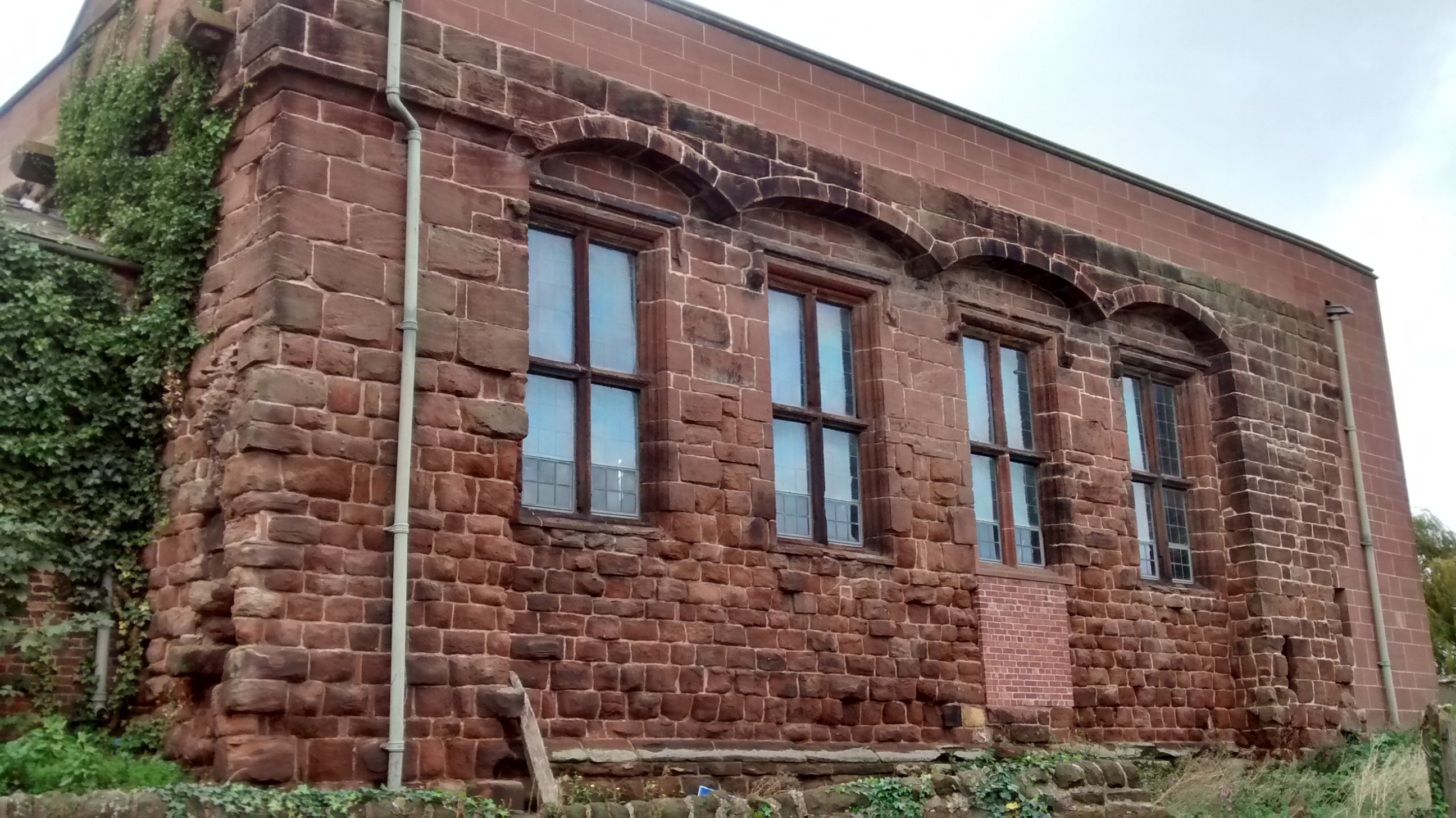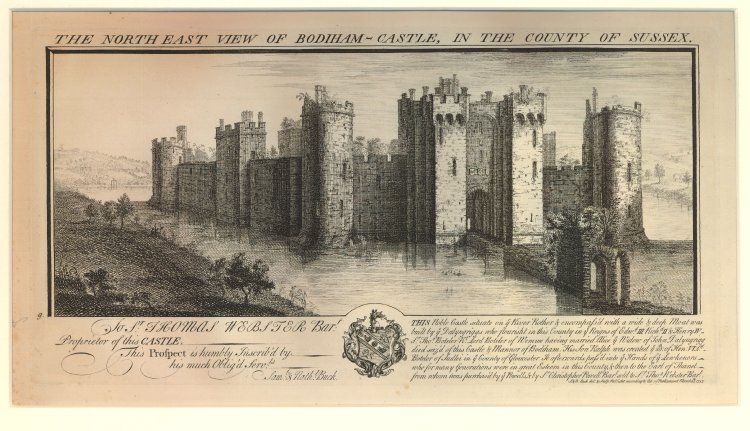|
Ince Manor
Ince Manor or Ince Grange is a former monastic grange in the village of Ince in Cheshire, England. The remains of the manor house, consisting of the old hall and the monastery cottages, are recorded in the National Heritage List for England as a designated Grade I listed building, and a scheduled monument It is one of only two surviving monastic manorial buildings in Cheshire, the other being Saighton Grange Gatehouse. History Ince Manor is one of the earliest recorded properties of St Werburgh's Abbey, Chester, and was recorded in the Domesday Book. In 1277 Edward I was entertained at the manor. In 1399 and again in 1410 a licence to crenellate was obtained. Following the dissolution of the monasteries the manor remained in church ownership until 1547 when it passed to Sir Richard Cotton, and from his son George, to Sir Hugh Cholmondeley. It then passed to the Vale Royal branch of the Cholmondeleys until 1724, when it was sold by Charles Cholmonde ... [...More Info...] [...Related Items...] OR: [Wikipedia] [Google] [Baidu] |
Samuel And Nathaniel Buck
Samuel Buck (1696 – 17 August 1779) and his brother Nathaniel Buck (died 1759/1774) were English engravers and printmakers, best known for their ''Buck's Antiquities'', depictions of ancient castles and monasteries. Samuel produced much work on his own but when the brothers worked together, they were usually known as the Buck Brothers. More is known about Samuel than Nathaniel. Careers Samuel Buck was born in Yorkshire in 1696. After publishing some prints in that county he moved to London. With Nathaniel he embarked on making a number of series of prints of "antiquities", which consisted of ancient castles and former religious buildings in England and Wales. Starting in 1724, they travelled around these countries, and completed sets of prints for the regions of England by 1738 and for Wales between 1739 and 1742. These are commonly known as ''Buck's Antiquities''. During this time they also worked on a series of townscapes in England and Wales entitled ''Cities ... [...More Info...] [...Related Items...] OR: [Wikipedia] [Google] [Baidu] |
Domesday Book
Domesday Book () – the Middle English spelling of "Doomsday Book" – is a manuscript record of the "Great Survey" of much of England and parts of Wales completed in 1086 by order of King William I, known as William the Conqueror. The manuscript was originally known by the Latin name ''Liber de Wintonia'', meaning "Book of Winchester", where it was originally kept in the royal treasury. The '' Anglo-Saxon Chronicle'' states that in 1085 the king sent his agents to survey every shire in England, to list his holdings and dues owed to him. Written in Medieval Latin, it was highly abbreviated and included some vernacular native terms without Latin equivalents. The survey's main purpose was to record the annual value of every piece of landed property to its lord, and the resources in land, manpower, and livestock from which the value derived. The name "Domesday Book" came into use in the 12th century. Richard FitzNeal wrote in the ''Dialogus de Scaccario'' ( 1179) that the book ... [...More Info...] [...Related Items...] OR: [Wikipedia] [Google] [Baidu] |
Grade I Listed Buildings In Cheshire
The county of Cheshire is divided into four unitary authorities: Cheshire West and Chester, Cheshire East, Warrington, and Halton. As there are 142 Grade I listed buildings in the county they have been split into separate lists for each unitary authority. * Grade I listed buildings in Cheshire West and Chester * Grade I listed buildings in Cheshire East * Grade I listed buildings in Warrington * Grade I listed buildings in Halton (borough) See also * Grade I listed churches in Cheshire * Grade I listed non-ecclesiastical buildings in Cheshire * Grade II* listed buildings in Cheshire The county of Cheshire is divided into four unitary authorities: Cheshire West and Chester, Cheshire East, Warrington, and Halton. As there are 390 Grade II* listed buildings in the county, they have been split into separate lists for each un ... {{GradeIListedbuilding * * ... [...More Info...] [...Related Items...] OR: [Wikipedia] [Google] [Baidu] |
Stocks
Stocks are feet restraining devices that were used as a form of corporal punishment and public humiliation. The use of stocks is seen as early as Ancient Greece, where they are described as being in use in Solon's law code. The law describing its use is cited by the orator Lysias: "“He shall have his foot confined in the stocks for five days, if the court shall make such addition to the sentence.” The “stocks” there mentioned, Theomnestus, are what we now call “confinement in the wood”" (''Lys''. 10.16) Form and applications The stocks, pillory, and pranger each consist of large wooden boards with hinges; however, the stocks are distinguished by their restraint of the feet. The stocks consist of placing boards around the ankles and wrists, whereas with the pillory, the boards are fixed to a pole and placed around the arms and neck, forcing the punished to stand. Victims may be insulted, kicked, tickled, spat on, or subjected to other inhumane acts. In the Bible, ... [...More Info...] [...Related Items...] OR: [Wikipedia] [Google] [Baidu] |
National Lottery (United Kingdom)
The National Lottery is the state-franchising, franchised national lottery established in 1994 in the United Kingdom. It is regulated by the Gambling Commission, and is currently operated by Camelot Group, to which the licence was granted in 1994, 2001 and again in 2007, but will be operated by Allwyn Entertainment Ltd from 2024. Prizes are paid as a lump sum (with the exception of the Set For Life which is paid over a set period) and are tax-free. Of all money spent on National Lottery games, around 53% goes to the prize fund and 25% to "good causes" as set out by UK Parliament, Parliament (though some of this is considered by some to be a form of "stealth tax" levied to support the National Lottery Community Fund, a fund constituted to support public spending). 12% goes to the UK Government as lottery duty, 4% to retailers as commission, and a total of 5% to operator Camelot, with 4% to cover operating costs and 1% as profit. From introduction in November 1994 until April 20 ... [...More Info...] [...Related Items...] OR: [Wikipedia] [Google] [Baidu] |



.png)